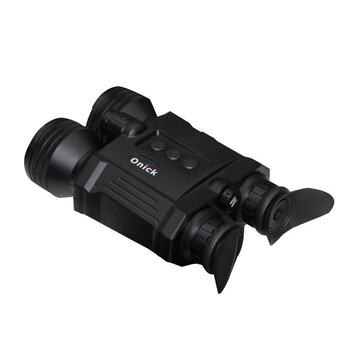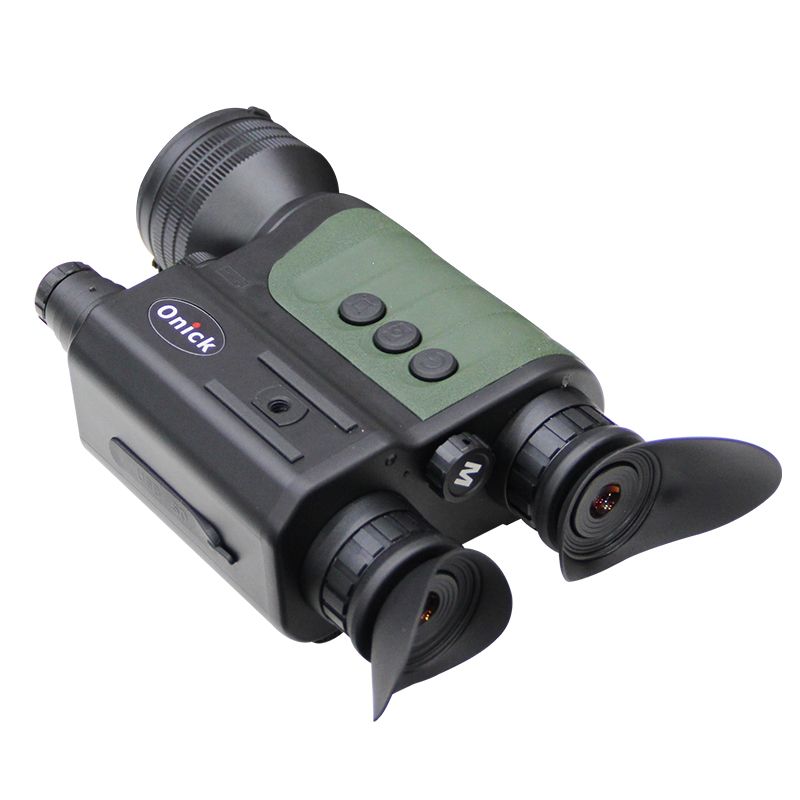The handheld laser rangefinder is a portable device that integrates laser ranging and anti-reconnaissance warning functions. It is primarily used to quickly acquire target distance information in complex environments, while also detecting and warning enemy reconnaissance signals in real time. It combines both "active detection" and "passive defense" capabilities and is widely used in military, security, and special operations fields. The following is a detailed analysis of its core functions, technical principles, and application scenarios:
1. Core Functions and Technical Principles
The core value of this device lies in its "dual-function synergy"—actively acquiring target data through laser and passively evading enemy reconnaissance through detection. This combination enhances the user's battlefield survivability and mission efficiency. 1. Laser Ranging Function: Quickly Obtain Target Distance
Principle: This function emits a low-power laser pulse (typically in the eye-safe wavelength bands of 1.06μm or 1.55μm), measures the time difference between the laser's emission and its reflection from the target to the receiver, and uses the speed of light (approximately 300,000 km/s) to calculate distance:
Distance = (Laser Round Trip Time × Speed of Light) ÷ 2
Features:
High Accuracy: Civilian-grade accuracy reaches ±1 meter, military-grade accuracy reaches ±0.1 meter;
Fast Speed: A single ranging measurement typically takes between 0.1 and 1 second, and continuous ranging is possible;
Wide Range: Handheld devices generally cover a range of 50 meters to 5 kilometers (some military models can reach over 10 kilometers), adapting to targets at varying distances (such as people, vehicles, and buildings). 2. Counter-reconnaissance Warning Function: Passively Detecting Enemy Signals
Counter-reconnaissance is the core of this device's defense. It passively receives and analyzes signals emitted by enemy reconnaissance equipment (such as laser, radar, and infrared), enabling early detection and avoidance.
Detection Targets:
Enemy Laser Rangefinder Signals: When an enemy uses a laser rangefinder to target friendly targets, the device can capture its laser pulses and identify the source's direction.
Radar Signals: Detects electromagnetic radiation (microwave band) emitted by low-altitude radars, individual radars, and other radars.
Infrared/Thermal Imaging Signals: Some high-end models can detect infrared radiation from enemy infrared reconnaissance equipment (such as infrared scopes).
Mechanism: Using built-in multi-band sensors (laser receivers, electromagnetic signal detectors, infrared sensors, etc.), the device monitors abnormal signals in the environment in real time. After the processor analyzes the signal's frequency, strength, and direction, it issues a warning via sound, vibration, or on-screen display (e.g., "Laser illumination detected 30° to the left").

II. Application Scenarios
Handheld laser rangefinders are designed to meet the needs of attack and defense in dynamic environments. Typical application scenarios include:
Military:
Individual Combat: Soldiers in reconnaissance and sniping missions need to quickly measure the distance to targets (such as enemy fortifications and vehicles) while being alert to enemy laser targeting or radar locks and taking cover in a timely manner.
Special Forces Operations: During raids and infiltration missions, soldiers need to evade enemy reconnaissance equipment and avoid exposing their positions.
Battlefield Observation: Provides target distance data to artillery and armored units while also providing early warning of enemy counter-artillery reconnaissance.
Security and Border Patrol:
Border Control: Patrol personnel measure the distance to suspicious targets (such as illegal border crossers and vehicles) while detecting the approach of reconnaissance equipment such as drones and night vision devices.
Key Point Protection: Provides early warning of external laser rangefinder or infrared reconnaissance activity in sensitive areas such as airports and military bases.
Field Operations and Emergency Response:
During geological exploration and rescue missions, soldiers need to measure terrain distances (such as canyon width and obstacle distances) while being alert to potential reconnaissance threats in unknown environments (such as illegal surveillance equipment).

III. Device Features
As a portable device, its design must balance functionality and practicality. Core features include:
Portability: Weighing typically between 500g and 1.5kg, and similar in size to a handheld walkie-talkie or small telescope, it is suitable for one-handed operation or mounting on a tactical vest or helmet.
Low Observability: Its laser ranging module utilizes "low probability of intercept" technology (such as encrypted pulses and low-power transmission) to reduce detection by enemy counter-reconnaissance equipment.
Multi-Mode Adaptability: It can switch between "ranging mode" (focused on measurement) and "counter-reconnaissance mode" (focused on early warning), or operate both modes simultaneously.
Battery Life and Environmental Adaptability: The battery life is typically 6-12 hours (depending on frequency of use). It is waterproof, shockproof, and resistant to electromagnetic interference, making it suitable for use in complex environments such as outdoor and rainy weather.
IV. Differences from Single-Function Devices:
| Comparison Items | Handheld Laser Rangefinder for Counter-Reconnaissance | Standard laser rangefinder | Single anti-reconnaissance device (e.g., laser warning device) |
| Core Functions | Ranging + Counter-Reconnaissance Early Warning (Offense and Defense) | Range measurement only (active detection) | Only anti-reconnaissance warning (passive defense) |
| Applicable Scenarios | Complex adversary environments (such as battlefields and high-risk security) | Pure distance measurement (such as engineering, hunting) | Simple anti-reconnaissance (e.g., key point security) |
| Concealment Requirements | High (self-signal must be low enough to be detectable) | Low efficiency (no need to avoid enemy detection) | High (passive reception only, no active signal) |
A handheld laser rangefinder counter-reconnaissance device combines active detection with passive defense. It uses laser ranging to determine the target's distance and provides counter-reconnaissance early warning to determine whether the enemy is targeting it. This provides users with information advantage and survival assurance in adversarial environments, exemplifying the concepts of precision strike and concealed survival in modern tactical equipment.